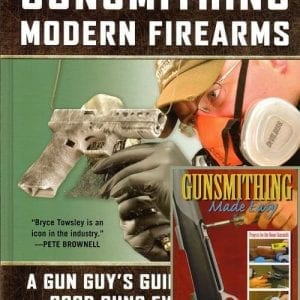Deer seasons are open and soon the rut will be heating up all over the country. Here are a few tips on one of my favorit deer hunting techniques, rattling.
1: Don’t Intimidate Them
My wife taught me this one. Like many, I thought that to shoot the dominant buck in the area I had to have a big set of horns. I had a “macho” set that I rattled and banged with loud abandon, but with no luck at all. They had served me well in other places such as New Brunswick, Texas, Iowa and Alberta, but back home in Vermont nothing was happening.
As I collapsed by the wood stove after a long day of hunting and started to complain about my poor luck (something I am prone do often), my wife picked up the antlers and said, “You have never shot a buck even close to this big around here. (Gee, thanks for pointing that out Honey.) Won’t it sound like it is two really big bucks fighting and scare them away?”
I thought she might have a point. Perhaps the sound is intimidating to them. I switched to a much smaller set of antlers, one about the average size of the better bucks usually taken in my area and began to rattle less aggressively.
I shot a buck the first time out. I was so grateful to my wife that I let her help butcher him.
2: Use a Barrier
Wary bucks will often try to circle downwind of your position to see if the fight is for real. If you set up so that they can’t, often they will come into view before they can smell you.
One of my favorite stands is on the edge of an abandoned apple orchard. I have a treestand at one of the many places the fence is down and the deer cross. The bucks will circle, trying to stay in the brush, but they hit the fence and the open woods beyond and don’t like to cross either one. I have lost count over the years of how many bucks have come sneaking up along the fence to find me waiting.
Any time you can set up with your scent blowing to an open field, a road, lake, river, ledge or any other place that a buck can’t or won’t cross you may be able to bring him in without scenting you. Be careful, though, of cliffs or other solid objects, they can cause the wind to swirl and blow your scent to places you don’t expect it to be.
3: Keep The Faith
Rattling works anyplace there are whitetail deer. I don’t care what the locals say, it’s true. No doubt it works better in some places than in others; deer densities, buck-to-doe ratios and hunting pressure all influence the results, which will vary with the locality. But it remains that rattling can and will work if there are bucks lurking about.
Time and again I have traveled to other states or provinces to hunt and have had the locals insist that not only was I “wasting my time,” that “rattling will only scare our deer.”
“That might be all right in Texas, but it won’t work here.” I just love to prove them wrong.
My first Alabama buck was just such a case. After we called several bucks in a couple of days we made a believer out of the lodge owner.
A New Brunswick outfitter had a similar revelation, as did a fellow in Maine and ………. well, you get the picture.
4: Persistence
The primary reason that many hunters are convinced that rattling doesn’t work where they hunt is because they really haven’t tried it. Sure, they claim that they have, but the truth is that if they are like most hunters they rattled from two or three setups and then quit, satisfied that their deer won’t come to horns.
If there is a deer hunting technique that works every time it is used somebody forgot to tell me. Think about how many hours you spend in a treestand, tracking, still-hunting or whatever in relation to how many bucks you take. I’ll bet it’s more than you care to admit. So how come you give rattling an hour or so and then write it off?
If you believe that rattling will work, it will. But just like any other technique, not every time and not every day. Stick with it; sooner or later it will happen.
5: Rattle where there are Deer
Everybody knows that rattling works great in Texas and when asked why, most hunters will go into great detail about buck to doe ratios. No doubt it’s a factor, but that’s not the main reason. Rattling works so well in Texas because they have lots and lots of deer.
Places like northern Maine, New Brunswick or Alberta, can harbor a lot of empty woods. “If a tree falls in the woods and nobody is there to hear it, does it make a sound?” How do I know? But I’ll tell you this; if you rattle in woods with no bucks around to hear it you won’t be eating much venison.
Find buck sign first. Hunt until you locate lots of hot scrapes, rubs and tracks, then rattle.
6: Partners
Two hunters can take advantage of a smart buck’s tendency to circle downwind. By placing the second hunter downwind he will often get a shot at a buck that the guy with the horns would never have seen.
7: Be Ready
Bucks can show up fast, don’t get caught with the horns in your hands and your rifle or bow out of reach.
8: Be the Deer
Too many hunters complicate the process of rattling unnecessarily. They rattle for exactly so many seconds, wait for so many more to rattle again. They make sure they scrape the antlers just so when they pull them apart or they scrape a tree exactly this many times before they thump the ground exactly that many more and on and on. I have even seen a hunter who kept his eyes on his watch while rattling so he wouldn’t vary from the exact timing of each sequence. (And then complained that he wasn’t seeing any deer.)
It doesn’t have to be that complicated, deer can’t tell time, so don’t worry about how long or how often you rattle. Don’t think so much, let your mind go loose and try to envision what a couple of bucks fighting will sound like, it will hardly follow any set rules. Instead of worrying about times or techniques simply think of a fight in your mind as you rattle and make it sound like that.
As they say in Hollywood, “be the deer.”
9: Take the Shot
Don’t wait for a better shot, it may not come. Take the first decent shot presented.
10: Any Time of Day
Don’t think that rattling only works in the early morning or late afternoon hours. Mark Drury and I left an unproductive stand late one morning and rattled in a great buck on the first setup.
Had my muzzle loader gone off I might have a photo to show you, but it didn’t and I don’t.
11: Wind
Most hunters pay attention to wind direction while calling. Also, most know to keep an eye downwind while rattling for bucks circling to scent you. But also be mindful of the wind as you move from setup to setup. If your scent is drifting ahead of you into your hunting area you will alert the bucks long before you start rattling. Move to new calling locations only with the wind in your face.
12: Carry a sharp knife
If you have been paying attention, you will be needing it.

















